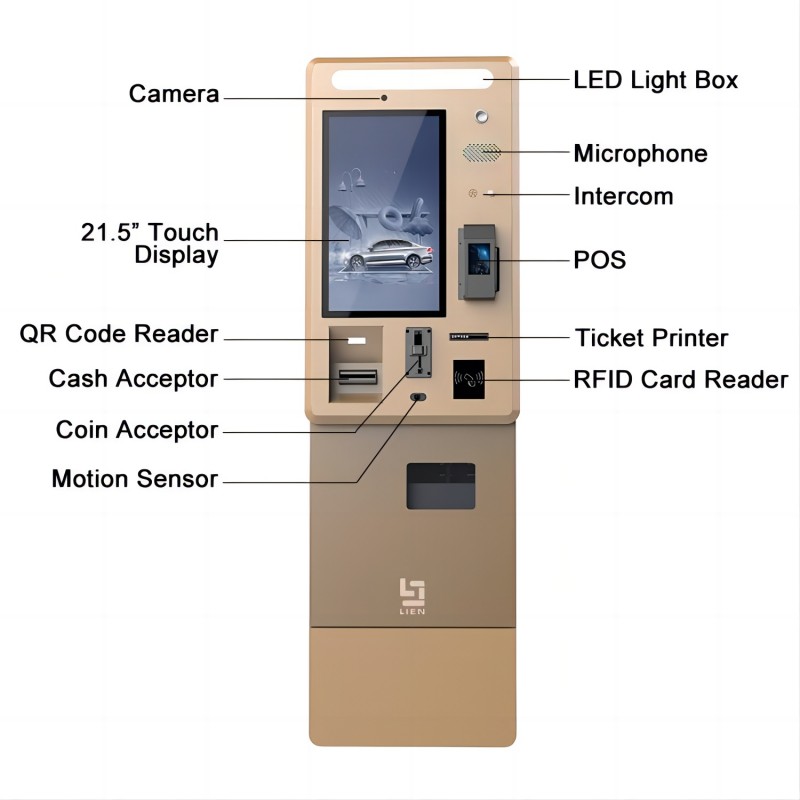Designing a parking kiosk involves creating a structure that facilitates payment for parking fees and provides information to users. These kiosks are typically found in parking lots or garages and serve as a crucial interface between drivers and parking management systems. A parking kiosk is a self-service terminal located in parking facilities, allowing users to pay for parking, obtain tickets, validate tickets, or access information about parking rules and rates. These kiosks may be automated or manned by attendants and play a vital role in managing parking operations efficiently.

Challenge: Designing an intuitive interface that facilitates quick and easy payment transactions.
Solution: Develop a user-friendly interface with clear instructions and navigation. Utilize touchscreens with responsive feedback and intuitive layouts. Offer multiple language options if the parking facility serves diverse communities. Provide options for payment methods such as credit cards, cash, or mobile payments for convenience.
Challenge: Ensuring the kiosk integrates seamlessly with the layout and design of the parking facility.
Solution: Design the kiosk to complement the architectural style and operational flow of the parking facility. Ensure visibility and accessibility for users entering and exiting the facility. Position kiosks strategically at entry/exit points or pedestrian pathways for ease of access.
Challenge: Protecting the kiosk from environmental elements and ensuring reliability in all weather conditions.
Solution: Construct the kiosk with durable materials such as stainless steel or aluminum to withstand vandalism and weather exposure. Install weatherproof seals and coatings to protect electronic components from moisture, dust, and UV radiation. Provide shading or shelters to protect users during inclement weather.
Challenge: Ensuring secure transactions and safeguarding user information and cash handling.
Solution: Use tamper-resistant hardware and secure locks to prevent unauthorized access to internal components. Install surveillance cameras or alarms to deter theft and vandalism.
Challenge: Ensuring accessibility for all users, including those with disabilities.
Solution: Design the kiosk to comply with accessibility standards such as ADA (Americans with Disabilities Act). Provide accessible height and reach for wheelchair users. Ensure tactile feedback or audio cues for visually impaired users. Design a clear path to the kiosk with adequate space for maneuvering mobility aids.
Challenge: Incorporating modern technologies to enhance user experience and operational efficiency.
Solution: Integrate with parking management systems for real-time updates on parking availability and rates. Offer contactless payment options using NFC (Near Field Communication) or mobile apps. Provide QR code scanning for ticket validation. Utilize digital signage for dynamic information display.
Designing a parking kiosk involves addressing a range of considerations including functionality, user interface, integration with the parking facility, durability, security, accessibility, maintenance, and technological integration. By carefully evaluating these factors and implementing appropriate solutions, designers can create parking kiosks that streamline parking operations, improve user experience, and ensure efficient management of parking facilities.